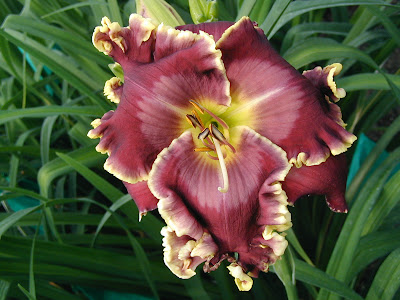During the hybridizing season, I make crosses primarily with my heart (although my head also figures into it, since I instinctively know the genetics of most of the mama plants). I pick a flower that makes my heart sing and then walk the rows with it and wait for each potential recipient of its pollen to cry out "choose me". I know that once the seeds are harvested, I'll be able to use my brain to decide which of them to plant. That's when I pull out all of my books and pictures on the computer and see how the genetics and outdoor performance line up.
I usually sort my seeds in early August, just as soon as I've harvested the last pod. August is not the best time to do it, since that's in the middle of the outdoor seedling evaluation season, so I need to get the sorting done in just 3-4 days and then get them in the ground if they're going to have a chance to bloom in 7 months. I usually make about 2000 pods with about 20,000 seeds and plant about 5,000.
Because I closed the greenhouse this year, I've delayed planting until this May. That's meant I've had the luxury of really thinking through which of the seeds to plant. I did it on and off over about 3 weeks and just finished late yesterday. When making crosses last spring, I made some really big bets with pollen parents, and have chosen to plant seeds from all 105 of them. This is down from nearly 200 in a typical year, but in those years I have also abandoned whole crosses, not satisfied with the performance of their genetics over the summer.
This year I will be planting about 5200 seeds. The vast majority will be from my own seedlings and introductions. 40% of the seeds will come from just 12
pollen parents, including 500 from 52708, 300 from 33109, 250 from 8110, 200 from 13810, 150 from 23010 and 14210, 125 from 28709, and about 100 from 22305, 4110, 39409, 25510, and Desire of Nations. In subsequent posts, I'll discuss why I used each of these so heavily, what I crossed them with, and what I'm hoping to get.










